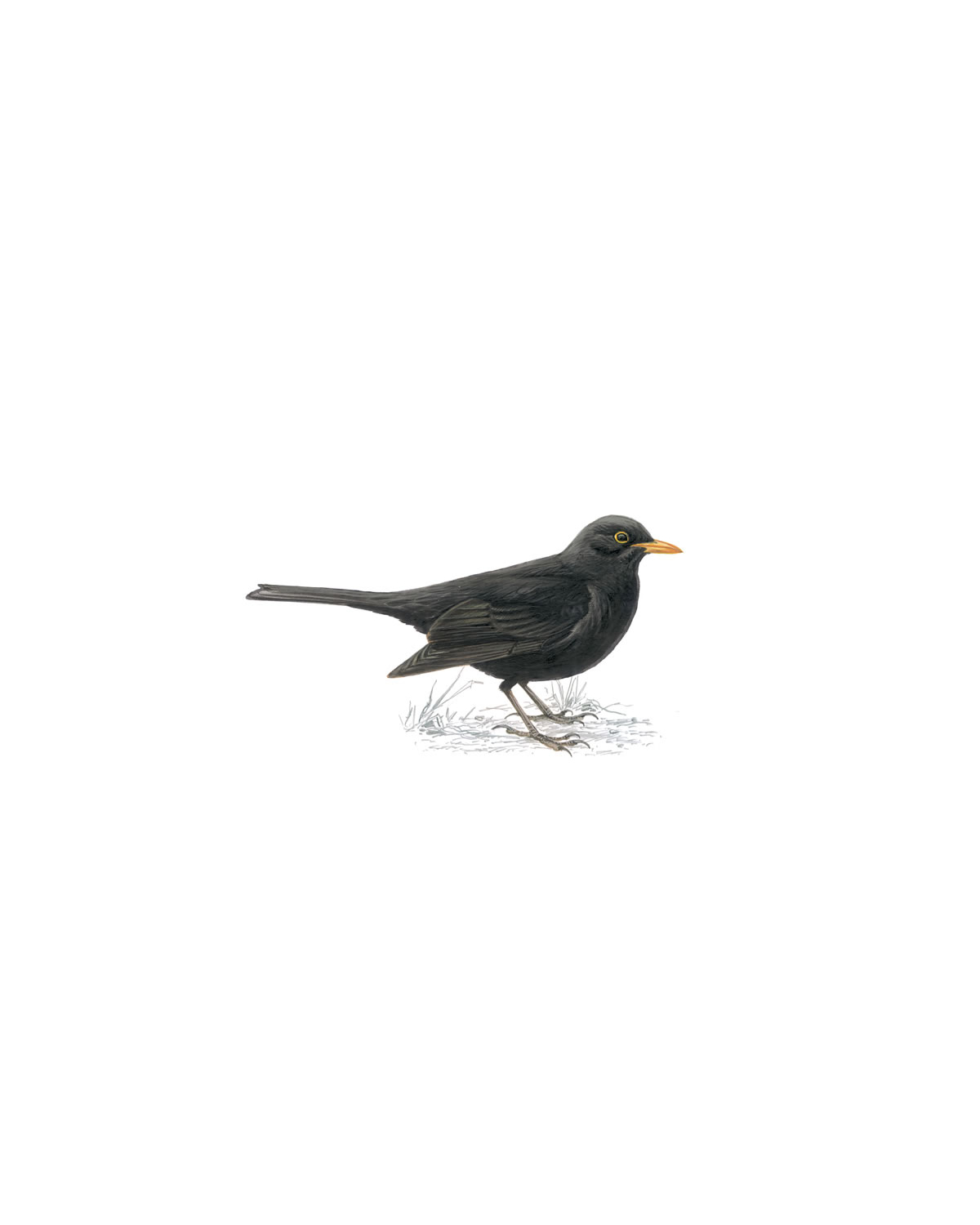
Turdus merula
TAXONOMY
Turdus merula Linnaeus, 1758.
OTHER COMMON NAMES
English: Eurasian blackbird, common blackbird; French: Merle
noir; German: Amsel; Spanish: Mirlo Comъun.
PHYSICAL CHARACTERISTICS
9.4–11.4 in (24–29 cm); male 2.1–5.3 oz (60–149 g); female
3.0–3.7 oz (85–106 g). Males have black plumage and a yellow
bill; females have brown plumage and a dark bill.
DISTRIBUTION
Europe from Iceland eastwards.
HABITAT
Mainly damp forest and woodlands, from tundra to golf
courses, gardens, parks, and town shrubberies, farmland with
hedges, and scattered woods.
BEHAVIOR
Bold and tame, feeding on ground where walks, hops, or runs;
large roosts after breeding season. Flocks in winter.
FEEDING ECOLOGY AND DIET
Fruits, berries, grass seeds, many invertebrates including beetles,
caterpillars, grasshoppers, snails, spiders, and earthworms.
REPRODUCTIVE BIOLOGY
Breeds April–August, nest large and untidy, of grass, twigs,
stems, and string, lined with mud and fine grass. Three to
four eggs, incubation 11–14 days, fledging 15–16 days. Two
broods.
CONSERVATION STATUS
Not threatened.
SIGNIFICANCE TO HUMANS
None known.
Photo Gallery of - Blackbird




 Animalia Life
Animalia Life